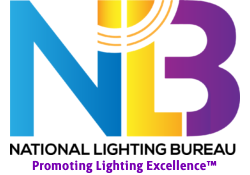Case Histories
How To Profit from High-Benefit Lighting®
by John Philip Bachner
It’s not uncommon to hear some professionals complain that “we’re treated like commodities. If our price is low enough, we get the job. If it isn’t, we don’t.”
But our own experiences suggest that’s not really the case, and research credited to Mobil Oil underscores the point: Eight out of 10 of Mobil’s customers buy the company’s gasoline not because of low price, but rather because of a station’s convenience and cleanliness, and the courtesy, attentiveness, responsiveness, and promptness of its personnel.
So what’s this have to do with electrical distributors? A great deal, because “value-adds” are the name of the game. If you can provide something of value that your competitors cannot, you can gain the edge when price is more or less the same.
As it so happens, National Association of Electrical Distributors (NAED) members have an important value-add other nonmember competitors lack, providing they use it. That value-add is the right to sell equipment and services designed to give your customers and your customers’ customers High-Benefit Lighting®.
NAED is one of several key sponsors of the National Lighting Bureau, a 23-year-old not-for-profit educational organization sponsored by trade associations, professional societies, manufacturers, and agencies of the federal government. “High-Benefit Lighting” is the NLB-copyrighted phrase used to describe electric illumination systems that do more than just provide light. By virtue of that education, your customers and their customers will be able to save far more money than what it costs to operate and maintain a lighting system to begin with.
What’s the Lighting for?
When a customer asks for lighting system components, you immediately ask, “What do you need the lighting for?” You might get a response like, “Indoors. An office,” or “Outdoors, for a parking lot.” But answers like that do not really describe what the lighting will be used for and, because they don’t, opportunities can be lost.
For example, office lighting, generally speaking, is used to help people see what they’re doing. What they’re doing typically consists of many tasks, however. Consider word processors, for example. They commonly work from written documents, and input information into a computer by looking into a screen and, occasionally, looking at the keyboard. People often look up, too, be it to answer someone’s question, respond to a comment, or just to look around. When lighting is less than optimal, it takes longer to perform the tasks which depend on lighting.
How Much Does It Save?
How much does High-Benefit Lighting have to save in order to be worthwhile? Not much, considering that the components used for High-Benefit Lighting could be the same as those used for lighting that’s not nearly as effective.
However, for purposes of calculation, consider an office system that helps improve productivity by just one percent; that is, a system that will help a worker save 36 seconds every hour. If that worker is paid $25,000 annually (including FICA and fringes), the value of a one percent productivity boost is $250 per year. What’s that worth in terms of energy savings? Typically, it’s the equivalent of a 500 percent savings, given that it typically costs an organization about $50 per worker per year for the energy used by office lighting.
The value of better lighting can be even more pronounced in industrial situations, where safety and quality control factors are particularly important. At Metal Industries’ Elizabeth plant in Pennsylvania, for example, better lighting improved productivity, reduced rejects, lowered the accident rate, reduced insurance premiums, and lowered absenteeism. All in all, the company saved more than $1.9 million per year on an investment of just over $8,000, achieving a simple payback in 37 hours.
Outdoor savings
Outdoors, effective lighting can reduce vehicle/vehicle and vehicle/pedestrian accidents, tripping/slipping accidents, incidents of vandalism, break-in and assault, and other safety/security problems. And the lighting designed to improve safety/security can also be the principal element of an overall system that also enhances identification, attraction, and appearance. In retail operations, outdoor lighting improvements can result in more customers, more shopping, and more profit, as well as smaller security patrols that achieve better results.
Enhanced building and/or business values can also be achieved. In the case of a Pennsylvania shopping center, for example, new parking lot lighting reduced parking lot crime, permitted smaller security patrols, expedited snowplowing, attracted more shoppers, boosted sales, caused more retailers to locate there, lowering the vacancy rate and boosting profits more, and increased the value of the enterprise. All told, an installation that would have paid for itself in just over 100 years, based on operating and maintenance cost savings alone, actually paid for itself in less than 100 days, thanks to High-Benefit Lighting.
Spreading the Good Word
With respect to lighting equipment used for energy conservation purposes, don’t your customers and their customers really need to know that an opportunity to make change is an opportunity to gain the value only High-Benefit Lighting can provide? Perhaps more to the point, don’t they also need to know that a lighting system “improvement” that fails to consider what lighting is really used for could be counterproductive, and far more costly than it seems? For example, what good would it do to reduce office lighting energy consumption by, say, 50 percent, saving $25/worker/year, only to have productivity fall by one percent, costing $250/worker/year?
Ray DeSteiger is the chairman of the board of Raymond DeSteiger, Inc. He has represented NAED on the National Lighting Bureau board for the last six years.
Reprinted with permission from TED: The Electrical Distributor Magazine, October 1999. Published by the National Association of Electrical Distributors, Inc., 314/991-9000.
